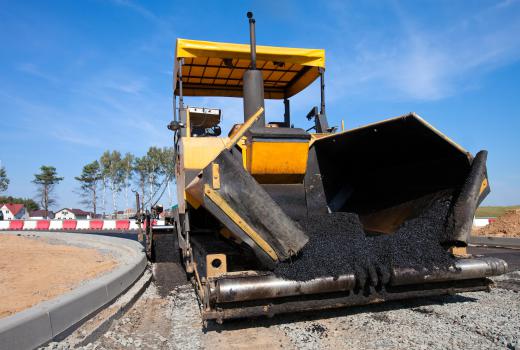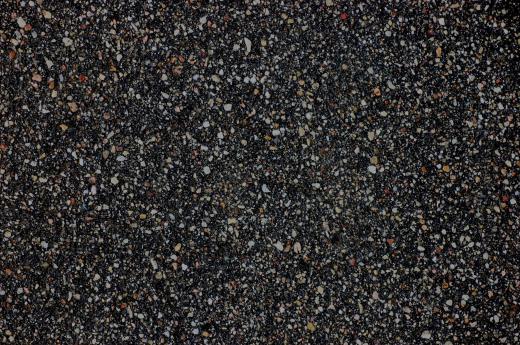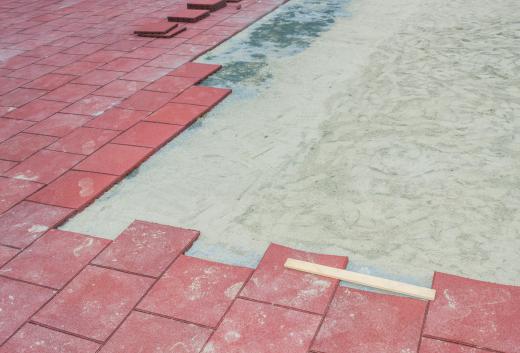What are Roads Made of?
 Michael Pollick
Michael Pollick
Different roads are constructed from different materials, depending on their intended uses and public demand. Conventional ones intended for long-term automobile traffic are often constructed in layers, which may include sand, gravel, tar, paving bricks, asphalt or concrete. Specialized roads for commercial uses may use other materials such as recycled rubber or metals. Some early ones in the United States were actually constructed from split wooden logs laid out in tight rows. These were called corduroy roads.
Perhaps the most common material used for roads is dirt. As men and primitive machines traveled the line of least resistance across the landscape, ruts would form in the ground itself. When property rights became established for landowners, these early dirt roads often formed along property lines. There was little formal creation during these early days, but individuals were free to make improvements such as weed removal and bridge building.

As the need for better roads grew, engineers developed new methods for creating them for long-term use. Sand, gravel and various tars were used to establish official roads for pedestrians and wheeled transportation. While they were an improvement over the ungraded and often impassable dirt paths, they were still at the mercy of Mother Nature and time.

By the 1920s, many new roads were built using a relatively new mixture of waste material derived from crude oil and gravel called asphalt concrete. Asphalt could be poured over a prepared bed of sand and gravel to form a solid but malleable surface. Automobiles could pass over the surface of the asphalt without causing much damage, although the constant stresses caused by traffic can cause asphalt to deform over time. Asphalt is still used to build roads, primarily because it is cheap to produce and easy to apply.

For more durability, some roads are built using concrete. Concrete will usually last longer than asphalt, but it also tends to crack and chip if not reinforced with rebar or divided into smaller sections, much like a sidewalk. Sections of concrete are often placed together to form roads, although some may be built on the site through the use of wooden forms.

Some roads in older cities may have been built with brick pavers or smooth stones. Bricklayers or stone masons would have placed the pavers over a prepared bed and used grout or concrete to hold the individual stones in place. When the use of asphalt became more popular, many of these brick and stone roads were simply paved over. Occasionally the asphalt layer will be worn away, revealing the bricks or other materials originally used.
AS FEATURED ON:
AS FEATURED ON:


















Discussion Comments
I'm sure all drivers in the U.S. have noticed what bad shape a lot of our roads, highways and freeways are in. Some of the damage is just because they are old. The weather, like frost, snow and rain make potholes and cause other damage to the road surface. And then, the heavy trucks driven on the road really tear them up.
I know that road crews have a hard time repairing the streets, and after reading this article I can see that it's quite a complicated process to make a road, but I guess I just wish things were a little better where I live!
Growing up in Seattle, I heard about the huge project called the Denny Regrade. I'm sure that this happened in other hilly cities too. Anyway, there was one really big hill in downtown Seattle that was so steep that the street cars had to be pulled up the hill by cables. Finally, they decided that they had to 'move the mountain" and make the road level flat. What a job that must have been! I'm sure it helped the city of Seattle grow. It seems that road improvement has always been important in the U.S.
Post your comments